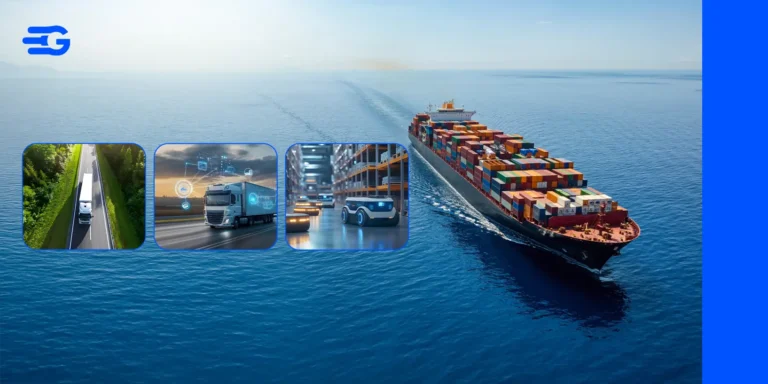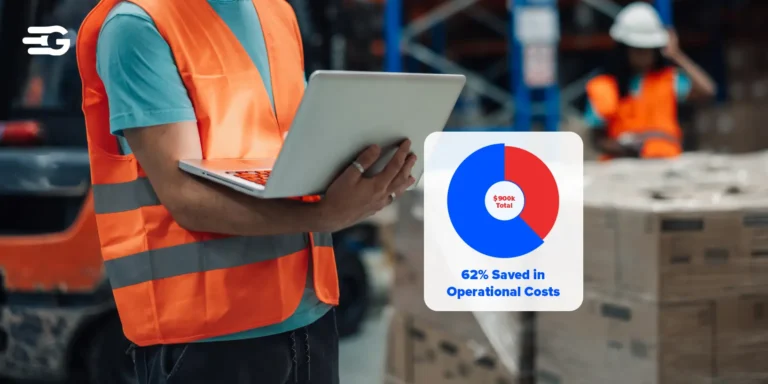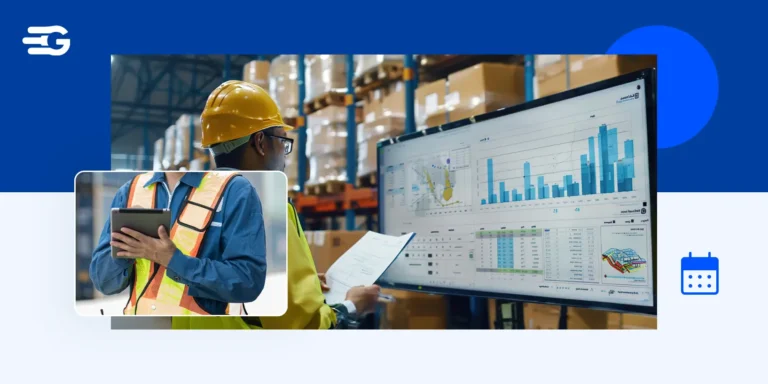Navigating Uncertainty: Crafting a Logistics Budget for FY2024-25 Amid Red Sea Disruptions
In today’s dynamic landscape of global logistics, creating a budget for the fiscal year 2024–25 requires a strategic approach that acknowledges and adapts to the prevailing disruptions. The challenges presented by geopolitical shifts, technological advancements, and unforeseen events make this task more complex than ever before. This blog can be taken into consideration by businesses while crafting a resilient logistics budget, considering the uncertainties that may impact the supply chain.
Impact of Global Disruptions on Logistics Budget:
| Industry Ripples | Resultant Challenge |
|---|---|
| Supply Chain Disruptions | Delayed Deliveries |
Capacity Constraints | Increased Costs & Timely movement of goods |
Labour Shortages | Decreased Productivity |
Price Fluctuations | Budget Overruns |
- Supply chain disruptions: Global events like the Red Sea, Russia-Ukraine War have caused significant disruptions, impacting trade and logistics networks
- Capacity constraints: Managers face challenges related to capacity constraints, including delays in shipping and transportation, affecting the timely movement of goods
- Labour shortages: Shortages in labour contribute to delays in production and transportation, affecting the overall efficiency of logistics operations
- Price fluctuations: Fluctuations in prices due to supply chain disruptions and other factors can lead to uncertainties in budget planning and forecasting
Strategies to Craft a Budget Amid Global Disruptions
Understanding Global Disruptions
Before diving into budgetary considerations, it’s crucial to identify key disruptions that may influence the logistics sector. Factors such as geopolitical tensions, natural disasters, pandemics, and technological disruptions can significantly impact the supply chain. A comprehensive risk assessment is the foundation for developing a robust budget.
Geopolitical tensions, often arising from shifting alliances and trade policies, can disrupt established supply chain routes. Natural disasters, ranging from hurricanes to earthquakes, pose a threat to transportation infrastructure. The recent pandemic has highlighted the vulnerability of global supply chains to health crises. Additionally, rapid technological advancements and the potential for cyber threats further add to the complexity of the logistics landscape.
Risk Assessment and Mitigation
A thorough risk assessment is necessary to identify vulnerabilities within the supply chain. Evaluate the geopolitical climate, assess the potential impact of natural disasters, and plan alternate sourcing locations. Develop mitigation strategies to minimize the potential impact on logistics operations.
In geopolitical risk assessment, consider the stability of key regions and the potential impact of political decisions on trade routes. Natural disaster risks can be mitigated by diversifying sourcing locations and having contingency plans in place. Pandemic risk mitigation involves developing flexible strategies that can adapt to changing health situations. Technological risks require robust cybersecurity measures and contingency plans for system failures.
Define Current Goals
Set clear, measurable, and achievable goals for the current year. For example, reducing logistics spending by 10% while increasing customer service levels by 15%. These goals should be SMART—specific, measurable, attainable, relevant, and time-bound.
Setting current goals is like plotting a course on a map; it gives direction to the logistics budget. SMART goals provide a framework for decision-making and resource allocation. For instance, reducing logistics spend is a common goal, but by setting a specific target and aligning it with improved customer service levels, businesses ensure that cost-cutting measures do not compromise service quality.
Get the Numbers Game Right
Initiate your logistics plan well in advance and stay vigilant for external factors that can impact logistics. Distinguish between fixed and variable costs, factoring in contract expiries for renegotiations. Plan variable costs based on parameters like expected inflation and potential budget extensions for unforeseen rate hikes.
Crafting an effective logistics budget involves precision in numbers. Start by understanding the timeline for budget planning, ensuring it aligns with the fiscal year and industry-specific cycles. Fixed costs, including salaries, rent, and warehousing, should be meticulously reviewed, considering contract expiries and provisions for renegotiations. For variable costs, such as materials and logistics, a detailed plan based on various parameters like inflation, spending reduction targets, and potential rate hikes is essential.
Technology Integration
The logistics industry is rapidly adopting advanced technologies to enhance efficiency and resilience. Consider investing in technologies such as blockchain, artificial intelligence, and predictive analytics to optimize supply chain processes, leading to long-term savings and improved agility.
Embracing technology is akin to having a state-of-the-art navigation system for your logistics journey. Blockchain technology ensures transparency and security in transactions, AI enhances decision-making processes, and predictive analytics aids in forecasting demand and optimizing inventory. While these investments may incur initial costs, they act as force multipliers, resulting in long-term savings and improved operational agility.
Contingency Planning
Given the unpredictable nature of global disruptions, a robust contingency plan is essential. Develop strategies for various scenarios, such as alternative sourcing options, diversified transportation routes, and flexible warehousing solutions, providing a safety net for swift adaptation to unforeseen circumstances.
Contingency planning is the lifeboat that ensures your logistics ship stays afloat during stormy times. Identify potential disruptions and map out detailed plans to address each scenario. For example, having alternative sourcing options in different regions or countries can mitigate the impact of geopolitical tensions or trade restrictions. Diversifying transportation routes ensures that disruptions in one area do not cripple the entire supply chain.
SCM Team Relationships & Supplier Collaboration
Strengthen relationships with key suppliers through open communication, fostering collaboration and transparency. Negotiate long-term contracts with key partners to secure stable pricing and availability of essential goods and services. Ensure SCM teams are aligned with external factors for improved demand forecasting, alternate sourcing, and sales planning.
Aligning SCM teams with external factors is like having a crew that is well-versed in reading the winds and currents. The recent Red Sea and Panama Canal delays highlight the importance of this alignment. SCM teams need to be agile in adapting to unforeseen circumstances, be it delays, changes in demand, or disruptions in the supply chain.
Regulatory Compliance
Stay informed about changes in international and domestic regulations that may impact logistics operations. Ensure that your budget accounts for potential compliance-related expenses, such as tariffs, trade restrictions, or changes in customs procedures.
Navigating the seas of international trade requires a keen eye on regulatory changes. Stay abreast of evolving customs procedures, trade restrictions, and tariffs that may impact logistics operations. Incorporate potential compliance-related expenses into the budget, ensuring that there are resources allocated to adapt to changing regulatory landscapes.
Sustainable Practices
As sustainability gains importance in the logistics industry, incorporate eco-friendly practices into your budget. Track your logistics emissions, Evaluate the environmental impact of transportation modes, packaging materials, and overall supply chain processes. Implementing sustainable practices aligns with global initiatives and contributes to long-term cost savings.
Sustainability is the compass guiding your logistics journey towards responsible and efficient practices. Evaluate the environmental impact of transportation modes, opting for greener alternatives where possible. Consider eco-friendly packaging materials to minimize the ecological footprint. Implementing sustainable practices not only aligns with global initiatives but also contributes to long-term cost savings by reducing waste and energy consumption.
Key Supply Chain Statistics
- 5% fleet is expected to be autonomous by 2029, potentially reducing trucking costs by 2% if level 5 autonomous vehicles are implemented.
- Almost 50% of supply chain leaders expect to implement generative AI in the next 12 months, with only 2% having no plans for deployment in the foreseeable future.
- 5.8% of supply chain budgets are allocated to AI investment.
- 6.6% of planned headcount reductions tied to AI in the next two years.
- A 40% decrease in Panama Canal movements may increase transit time, necessitating more efficient stocking plans.
- A 2021 Gartner Survey highlighted the priorities of supply chain leaders, including improving or updating technology (37%), cost reduction/cost optimization (31%), and increasing customer satisfaction (29%).
- The cybersecurity ramp-up, incorporating Continuous Threat Exposure Management (CTEM) in companies, could reduce cyber breaches by 75%. As digitization and AI become more prevalent, cybersecurity measures become increasingly critical.
- Strategic planning assumptions for the next four years include the prevalence of smart robots surpassing frontline workers in manufacturing, retail, and logistics by 2028, and the increased use of GenAI models in supply chain KPI reporting.
Conclusion
Logistics budget planning is an ongoing process, requiring iterations to reduce external impacts whenever required. Crafting a logistics budget for FY2024–25 amid global disruptions demands a proactive and adaptive approach. By conducting a thorough risk assessment, integrating advanced technologies, developing contingency plans, fostering supplier collaboration, staying abreast of regulatory changes, and embracing sustainable practices, businesses can create a budget that is resilient to the uncertainties of the global logistics landscape.
This strategic approach will not only mitigate risks but also position organizations for long-term success in an ever-changing environment. Join us as we set sail on a strategic journey to craft a logistics budget that not only weathers the storm of uncertainties but also positions your organization for long-term success in the unpredictable sea of global logistics. Smooth seas and fair winds await those who dare to navigate the uncharted waters of fiscal resilience.
Source:






